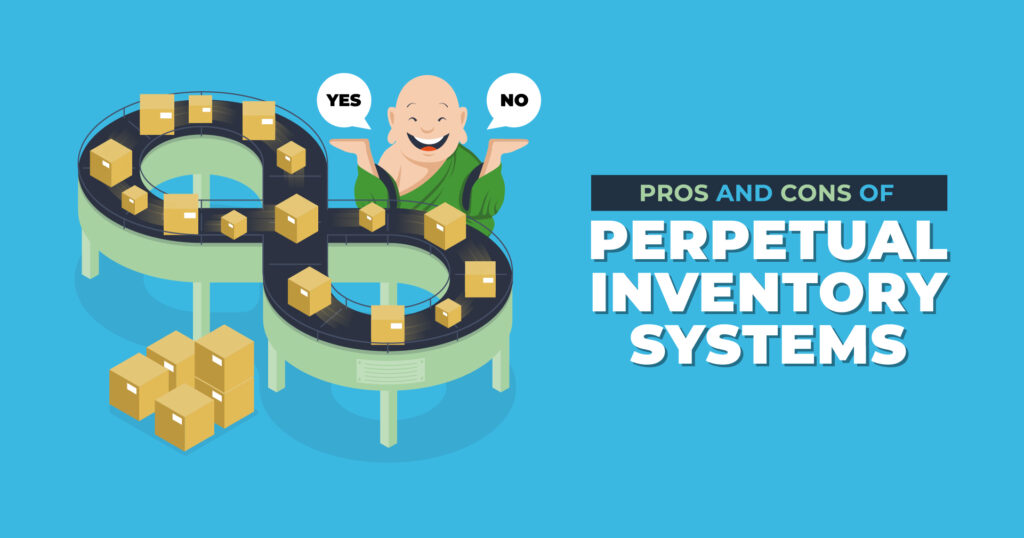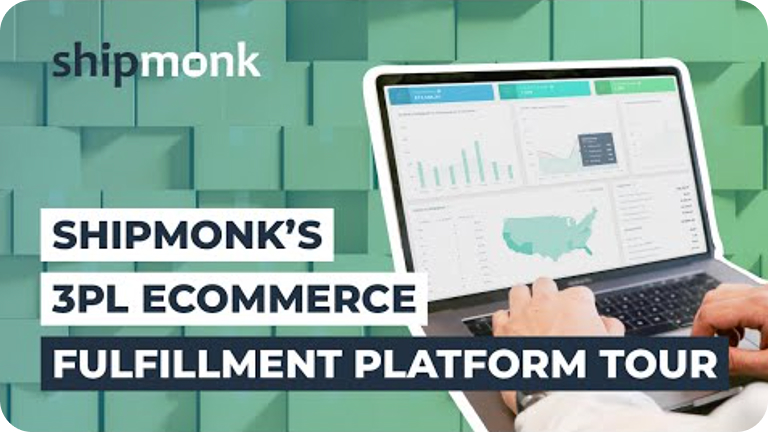Is your ecommerce business growing so quickly that you’re having trouble keeping products in stock? Are you experiencing frequent inventory discrepancies, or wishing you had a better handle on forecasting demand? If you answered yes to any of these questions, it may be time to upgrade to a perpetual inventory management system.
This article will take you through the pros and cons of a perpetual inventory system, so you can decide whether it’s right for your business. (Incidentally, a perpetual inventory system can help you make better business decisions, so right there you’ve got a pretty good reason to keep on reading!)
What is a Perpetual Inventory System?
Let’s start with a few definitions. There are two basic types of inventory systems:
A perpetual inventory system is a software-based system that integrates with an order management system and tracking technology to constantly monitor the flow of products in and out of a warehouse or fulfillment center. It maintains an accurate, real-time count of each SKU and instantaneously updates inventory levels as new merchandise is stocked and units are sold. A perpetual inventory system also collects important sales data that can aid in forecasting demand and become a powerful analytical tool for accounting, finance, marketing, and sales teams. During tax season, an accurate count is particularly important, so a physical count might be taken to double check the system’s data.
A periodic inventory system is an inventory tracking system that relies on physically counting inventory at regular intervals throughout the year and reconciling the physical count with the numbers in the company’s records. The merchant might suspend all sales and fulfillment operations while manually counting inventory, or it might cycle through the inventory in smaller batches without shutting the whole business down at once. Periodic inventory systems often use some technology, such as handheld scanners that upload the information to a database, but for the most part, the process is manual.
A periodic inventory system may be just fine for small retailers and ecommerce businesses with low SKU counts and manageable inventory turnover, but as the business grows this system becomes less practical. That’s when most businesses consider investing in a perpetual inventory system or switching to a third-party logistics (3PL) provider that offers an integrated solution for order and inventory management.
Pros of a Perpetual Inventory System
When you compare the two systems side by side, a perpetual inventory system has clear advantages, particularly for growing ecommerce businesses with high SKU counts and rapid inventory turnover. Here are some of the pros of a perpetual inventory system.
- Saves time: Once the merchandise has gone through the receiving process and is scanned into the system, a perpetual inventory system requires little to no labor. If a discrepancy is identified, only the affected SKU/SKUs would need to be counted. That said, many businesses do undertake a physical count once per year, or for audit purposes, just to make sure the count is accurate and the system is working properly. Reduces human error: Because there are no manual counts or manual data entry, the potential for human error is dramatically reduced. As inventory moves through the fulfillment center from receiving to slotting to pick and pack and shipping, barcode scanners track its location and status, and sync this information with the main warehouse management system.
- Instant access to real-time inventory data: Inventory counts are adjusted automatically through integrations with point-of-sale software and online order management systems. A system such as ShipMonk’s award-winning 3PL software platform offers robust features for customized reporting and inventory management, and is cloud-based for 24/7 access on any device. The ecommerce business can see inventory levels and order status at a glance through a centralized portal.
- No loss of revenue: There is no need to shut down stores or suspend online orders to undertake physical counts.
- Helps prevent stockouts and backorders: Perpetual inventory systems can be set up to automatically notify inventory managers when it’s time to reorder, automatically adjust for sales peaks and valleys and, among other things, help calculate the ideal economic order quantity (EOQ) to minimize receiving and carrying costs.
- Collects valuable data to power analytics: Ecommerce clients can customize dashboards and reporting, track performance, and analyze sales figures. For example, product teams can track fast or slow-moving items, and use historical data to more accurately forecast demand. Sales and marketing teams can track promotional results and sales trends.
- Accounting and financial figures: Perpetual inventory systems put key performance indicators and accurate financial information in the hands of those who need it. For example, they can be set up to automatically calculate gross profit and cost of goods sold (COGS) depending on the inventory valuation method you choose (FIFO, LIFO, Weighted Average, etc.). Accounting and finance teams have accurate numbers at the end of every accounting period, and at year’s end for regulatory reporting.
- Helps control inventory costs: With better insight into inventory and sales data, and more control over the reordering process, ecommerce businesses can reduce overstocks and carrying costs.
- Enables multichannel fulfillment: With online orders coming in from multiple sales channels, real-time data is essential to making sure inventory is in the right place at the right time for error-free order fulfillment.
- Makes splitting inventory easier: Real-time, centralized data is also essential for ecommerce businesses that want to split inventory across multiple warehouse locations to reduce shipping costs.
- Quickly identifies inventory discrepancies: With a perpetual inventory system, merchants can quickly and easily identify any discrepancies between physical and reported inventory levels that might indicate problems with theft, damaged goods or fraud. They might also identify areas for improving their supply chain or fulfillment operations.
Cons of a Perpetual Inventory System
Despite their advanced features, perpetual inventory systems aren’t right for every ecommerce business. Here are a few reasons why a merchant might decide to stick with a periodic inventory system.
- Expense: The software and hardware required, plus the cost of training employees to use them, can put a perpetual inventory system out of reach for many small businesses. If you’re easily managing periodic inventory counts currently, it doesn’t make sense to invest in a perpetual system until you need to.
- Integrations: A perpetual inventory system requires seamless integrations with warehouse, order, and inventory management systems. Managing this yourself requires a team of IT professionals and fulfillment experts.
- Physical counts may still be needed: Many retailers and ecommerce businesses conduct physical inventory counts annually (or more often for fast-moving items) even if they have a perpetual inventory system. In addition to investigating discrepancies, they like knowing that their digital records match the inventory that’s on the warehouse shelves.
Is a Perpetual Inventory System Right for Your Business?
We can’t answer that question without knowing the particulars of your ecommerce business. But we can tell you that if you’re having trouble with your current system (like lost or damaged inventory, excessive overstocks, frequent stockouts, and flying blind when forecasting demand) a perpetual inventory system can help. And if you’re having trouble justifying the expense, a 3PL like ShipMonk can make it more affordable.
Since we’ve already invested in the technology, you get the benefit of using our perpetual inventory system along with the stress-relieving efficiencies of outsourcing your fulfillment operations. Here are just a few of the “pros” of working with the pros at ShipMonk.
- Award-winning, easy-to-use software
- Access to real-time data from any device
- Seamless plug-and-play integrations with shopping carts, marketplaces, and ecommerce solution providers
- Transparency and control over orders and inventory management from a single source
- Synched data from multiple warehouse locations
- Industry-leading warehouse automation
- Virtual Carrier Network with affordable 2-Day shipping
- Omnichannel fulfillment capabilities
- Returns management
- Kitting and other special services
- Seller Fulfilled Prime Fulfillment and Amazon FBA prep
When you’re ready to upgrade your inventory system, contact us for a quote. We’d love to tell you more about our perpetual inventory system and how it can help your fast-growing business scale to new heights.





